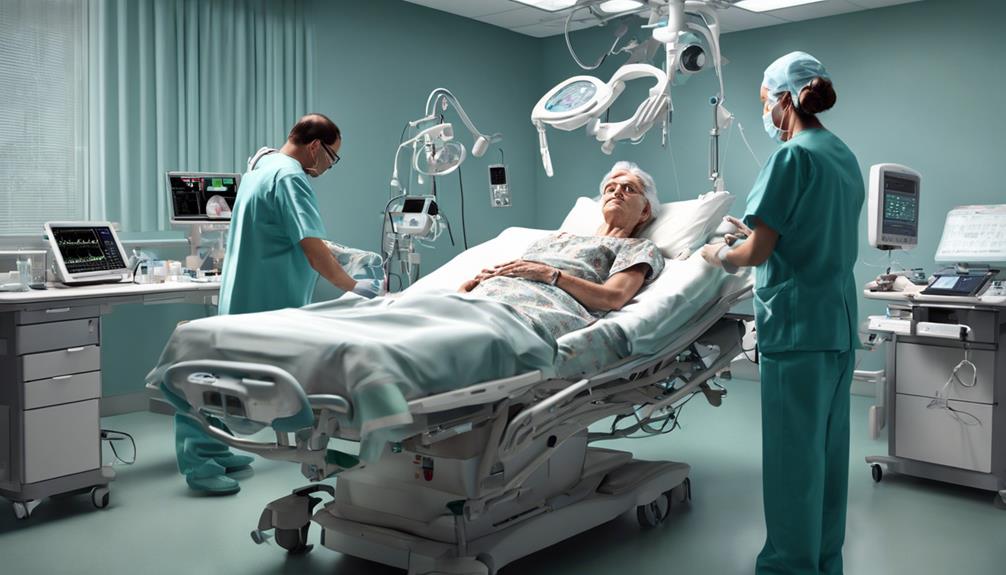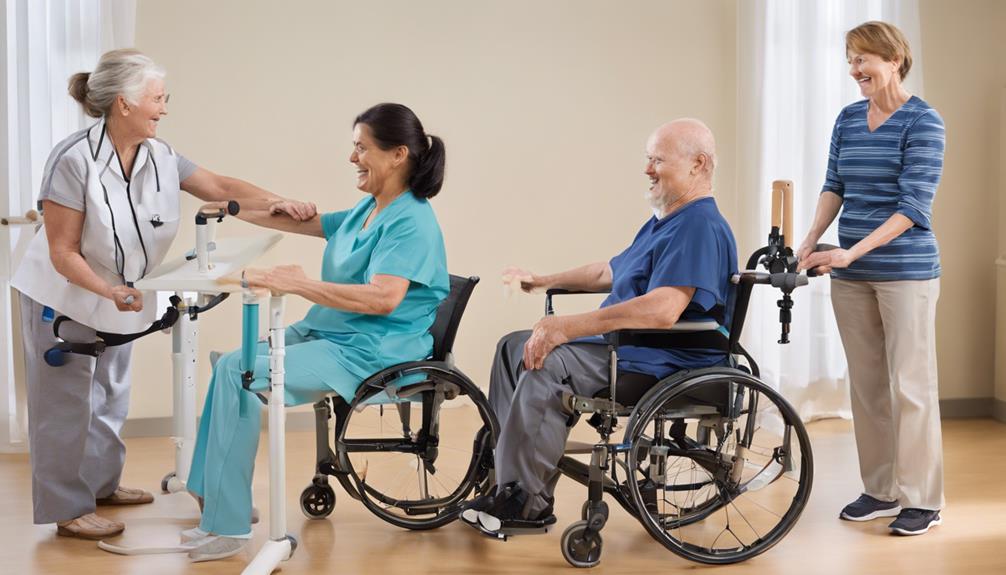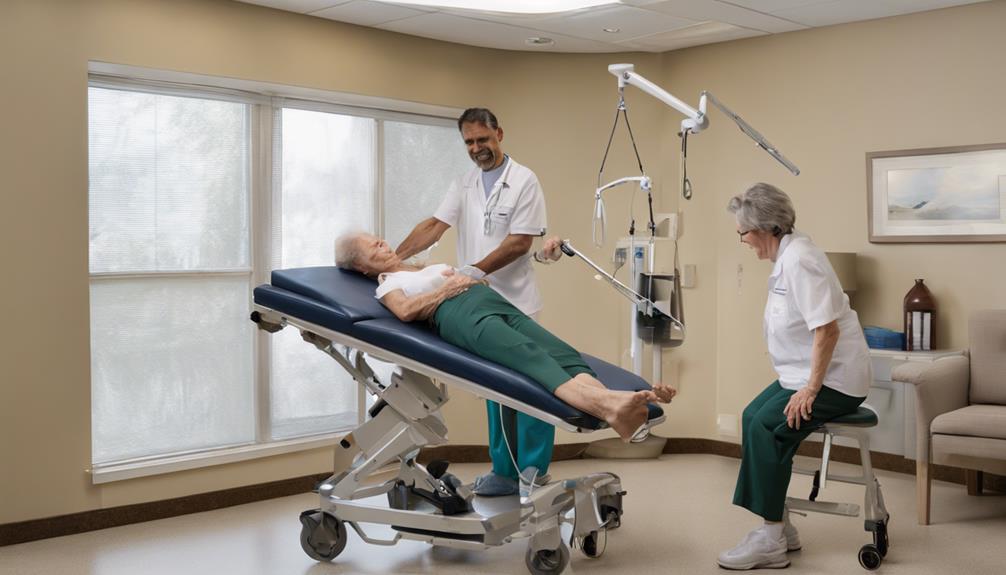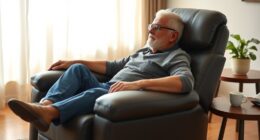Did you believe that bouncing back from a stroke was a piece of cake? Think again. Maneuvering through the intricate stages of recovery after a stroke can feel like attempting to solve a challenging puzzle with pieces that are constantly changing.
From the initial treatment phase to the long-term adjustments, understanding the nuances of each stage is essential for a successful recovery.
Curious to explore how each phase shapes the road to recovery and what strategies can make a difference? Let's unravel the mystery together.
Key Takeaways
- Swift emergency response crucial for minimizing brain damage.
- Early post-stroke care focuses on intensive rehabilitation therapies.
- Significant improvements in mid-term recovery; neuroplasticity aids in progress.
- Long-term recovery involves ongoing therapies, support groups, and monitoring.
Initial Treatment Phase
During the initial treatment phase of stroke recovery, our primary focus lies in swiftly administering emergency care to minimize brain damage and stabilize the patient's condition. Quick hospitalization is paramount to preserve brain tissue and avert further complications.
Depending on the type of stroke, emergency interventions such as clot-busting medication or surgery may be necessary. The goal during this phase is to stabilize the patient and kickstart the journey of stroke recovery. Acute interventions are crucial at this stage to address the immediate effects of the stroke and prevent additional harm.
First Few Weeks Post-Stroke

Following the initial treatment phase, the first few weeks post-stroke are critical for implementing rehabilitation therapies and setting recovery goals to kickstart the recovery journey. During this period, patients typically undergo intensive therapy sessions focusing on physical, occupational, and speech therapy to address the functional impairments caused by the stroke.
Discharge planning plays a crucial role in determining the next steps in the rehabilitation process, ensuring a smooth transition from acute care to post-acute settings. Early intervention and goal setting are key components of the recovery process in the first few weeks, helping individuals regain lost functions and work towards independence.
The brain's ability to rewire and heal is maximized during this phase, making it vital to engage in structured rehabilitation programs tailored to the individual's needs.
13 Months Post-Stroke: Recovery Progress
Significant improvements in recovery progress are often noticeable during the first 3-6 months following a stroke. This period is crucial as it marks a critical time window where spontaneous recovery and possible interventions can significantly impact long-term outcomes. Patients may undergo motor testing procedures to assess progress and guide stroke rehabilitation efforts. Mechanisms of functional recovery during this phase involve neuroplasticity, where the brain rewires and reorganizes itself to compensate for damaged areas. Understanding the areas of the brain involved in these processes can aid in tailoring rehabilitation strategies for optimal outcomes.
| Recovery Progress in Months Post-Stroke | Key Points |
|---|---|
| First Three Months | – Spontaneous recovery often occurs.<br>- Initial assessments and interventions crucial.<br>- Motor testing procedures may guide rehabilitation. |
| Three to Six Months | – Continued progress and possible recovery.<br>- Neuroplasticity plays a significant role in functional improvement.<br>- Rehabilitation strategies may be adjusted based on outcomes. |
6-Month Mark and Beyond

Beyond the critical 6-month mark post-stroke, individuals typically continue their recovery journey through ongoing therapies and regular monitoring of their progress. Many stroke survivors complete rehabilitation programs within the first year post-stroke. Some individuals may have returned to normal activities by the one-year mark, while others adapt to new limitations. Stroke recovery is a lifelong process that requires ongoing support and adjustments. Local stroke support groups offer empathy, encouragement, and shared experiences for individuals navigating life after a stroke.
- Ongoing Therapies: Individuals engage in continued physical, occupational, or speech therapies to improve functional abilities.
- Follow-ups: Regular check-ins with healthcare providers help track progress, adjust treatment plans, and address any new concerns.
- Rehabilitation Programs: Completing comprehensive programs aids in maximizing recovery potential within the initial year post-stroke.
- Support Groups: Local support networks provide valuable emotional support, information sharing, and a sense of community for stroke survivors.
Identifying Stroke Symptoms Quickly
To quickly identify stroke symptoms, remember the FAST acronym: Face drooping, Arm weakness, Speech difficulty, Time to call emergency services. Immediate action is crucial as time is of the essence when dealing with a stroke. Recognizing these signs promptly can make a significant difference in the care and outcomes for a loved one. Here is a table to help you understand the FAST acronym better:
| F – Face Drooping | A – Arm Weakness |
|---|---|
| S – Speech Difficulty | T – Time to call emergency services |
Knowing these signs can help you take the first steps in getting the necessary help as quickly as possible. By acting fast, you can ensure that the individual receives the care they need in a timely manner, potentially reducing the impact on their recovery. Remember, every minute counts when it comes to stroke, so being able to identify the symptoms promptly is crucial for a better outcome.
Frequently Asked Questions
What Is the Fastest Way to Recover From a Brain Stroke?
The fastest way to recover from a brain stroke involves early intervention with treatment, intensive therapy sessions, and adherence to a personalized recovery plan.
Consistent practice of rehabilitation exercises is crucial, along with monitoring progress, adjusting treatments, and maintaining motivation. These factors play a vital role in achieving quick recovery milestones.
It's essential to engage in prompt therapy and follow a structured plan to expedite the recovery process after a stroke.
How Long After a Stroke Can You Return to Normal?
We can't just snap our fingers and magically return to normal after a stroke. Recovery timelines vary greatly. Some folks might find a sense of normalcy within a year, but hey, for others, it could take longer.
The severity of the stroke, rehab efforts, and overall health play a big role. Long-term recovery is a journey with adjustments to a new normal along the way.
What Are the Strange Behaviors After a Stroke?
After a stroke, strange behaviors like emotional lability, disinhibition, apathy, and impulsivity can arise due to brain damage in areas like the frontal lobe or limbic system. These behaviors impact social interactions, decision-making, and emotional control. They pose challenges for both survivors and caregivers.
Therapy and support play crucial roles in understanding and managing these behaviors to aid in the recovery process.
What Is the Average Survival Time After a Stroke?
We find that the average survival time after a stroke varies based on several factors. Factors like age, overall health, and the type of stroke influence this greatly.
Studies indicate that the 30-day mortality rate post-stroke is approximately 14%.
Over the course of a year, the survival rate after a stroke is around 72%, with advancements in medical care and rehabilitation playing a significant role in improving outcomes for individuals.
Conclusion
As we journey through the stroke recovery stages timeline, we navigate a winding road filled with peaks and valleys, twists and turns. Like a delicate dance between progress and setbacks, we must remain steadfast in our commitment to healing.
With each step forward, we inch closer to the light at the end of the tunnel, where hope and resilience shine brightest. Let's embrace the challenges ahead with courage and determination, knowing that our path to recovery is paved with strength and perseverance.









